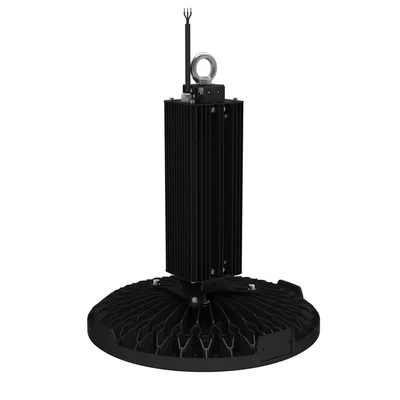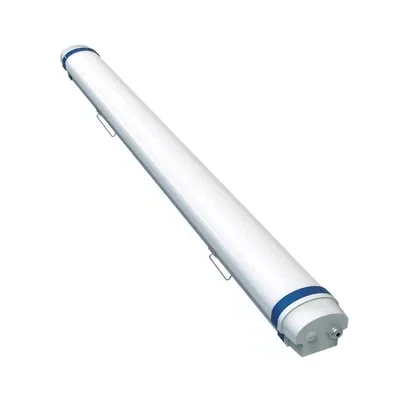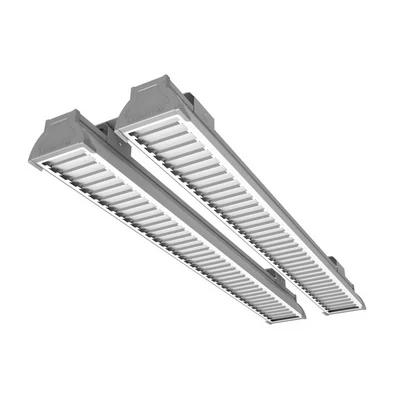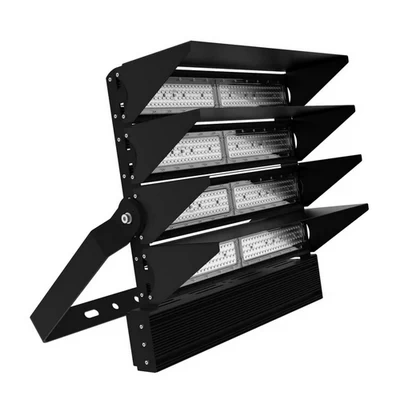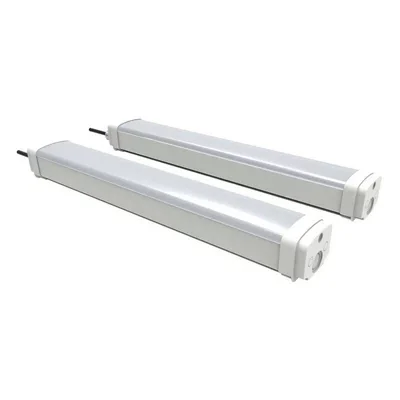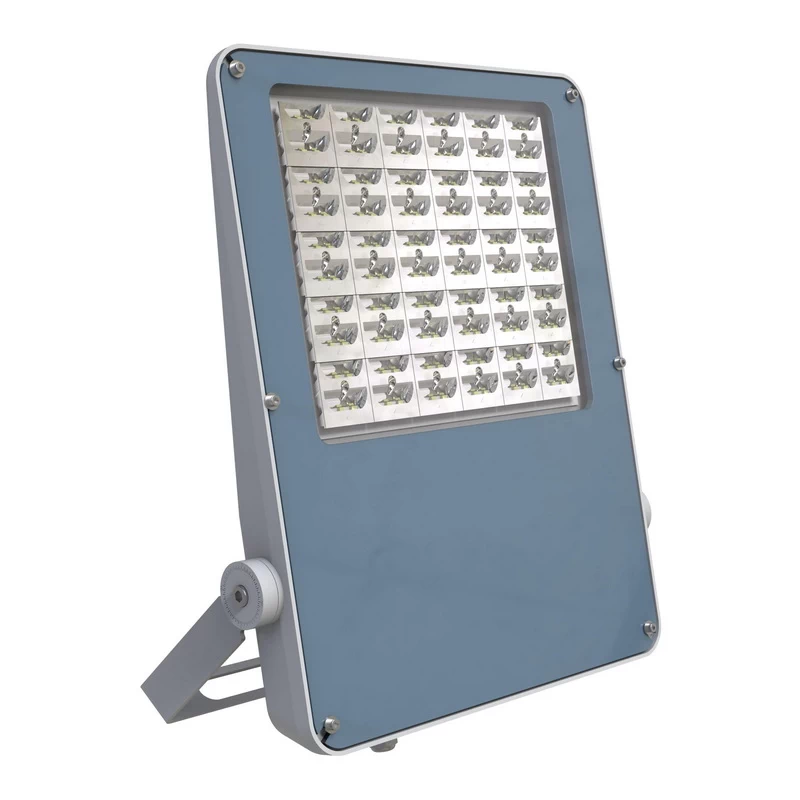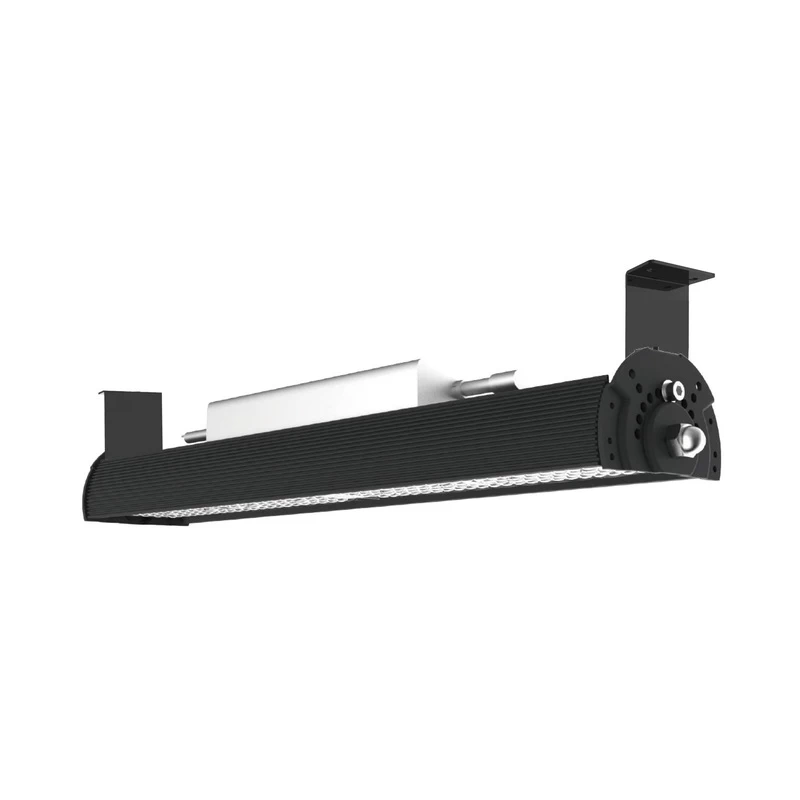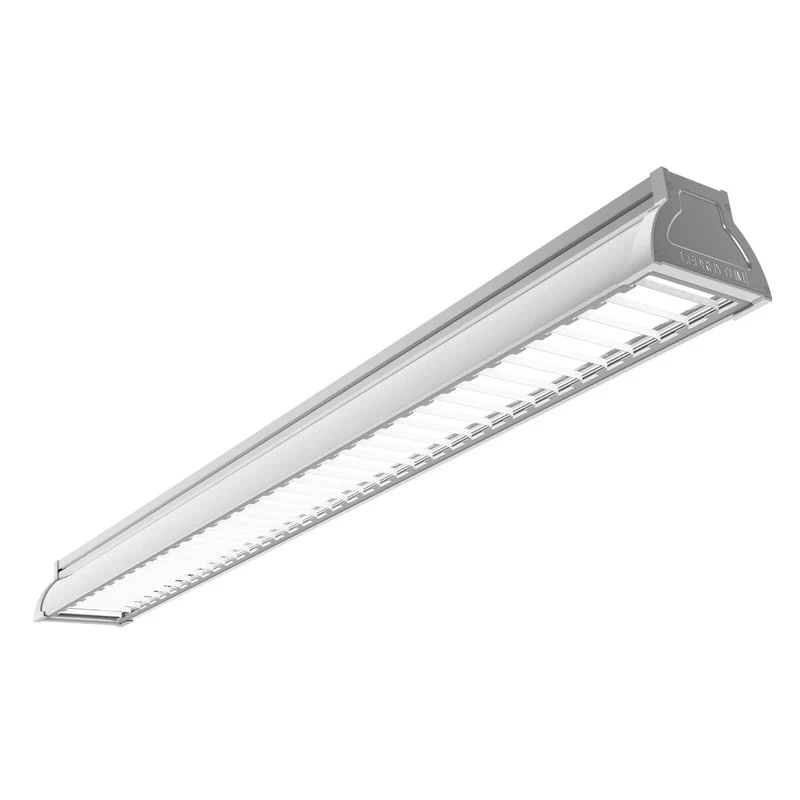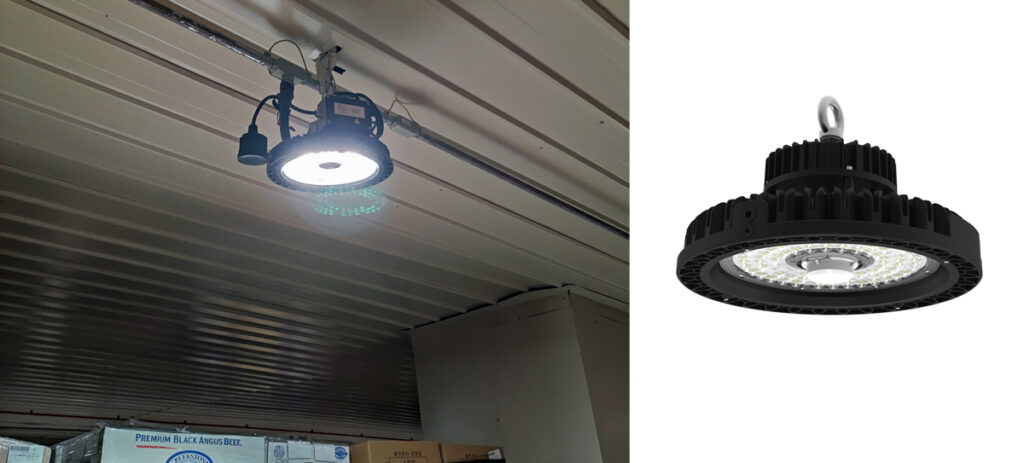Table of Contents
ToggleIntroduction: LED Light Color and Their Importance
The world of lighting can be overwhelming with all the different types of led light available. Whether you want to light your home, office, factory, or sports venue, picking the right light color is important. It helps create the right atmosphere.
Daylight vs bright white have different uses and settings. Soft White and Warm White bulbs can change the feel of a room. This guide will help you navigate through these options.
For more information on how lighting affects environments, check out our article on visible light.
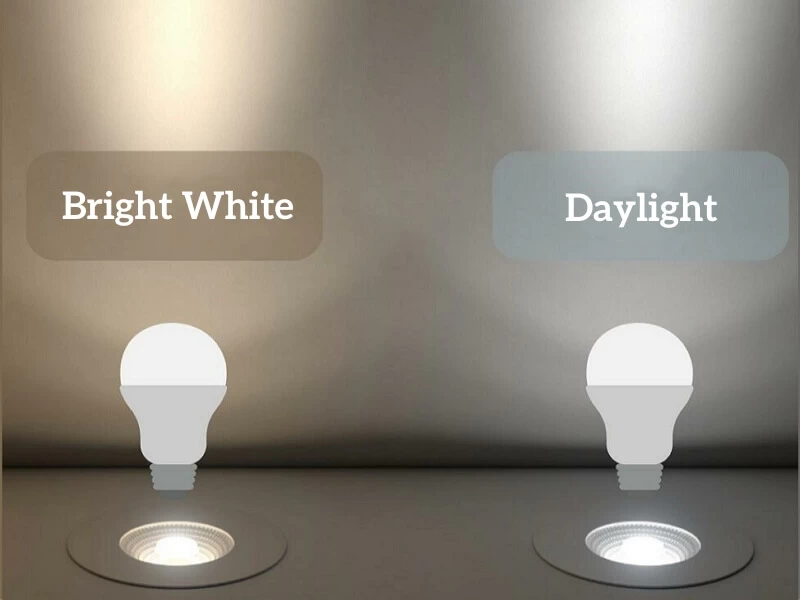
What to Know About Watts and Kelvins
Before diving into the different types of led light, it’s essential to understand Watts and Kelvins:
What Are Watts?
Watts refer to the energy consumed by a bulb. The larger the Watts, the brighter the lamp and the higher the power consumption.Traditional incandescent bulbs used a lot of watts.
In contrast, modern LED bulbs use less energy. They still provide a high lumen output. When choosing the right bulb, it’s crucial to consider watts to ensure energy efficiency.
What Are Kelvins?
Kelvins measure the color temperature of the light emitted by LED lights. Higher Kelvins produce a cooler, bluer light, like Daylight bulbs. Lower Kelvins create a warmer, softer light, such as Soft White bulbs.
Types of Light Bulbs: A Breakdown
Before diving into the different types of led light, it’s essential to understand Watts and Kelvins. Such as daylight, bright white, soft white, cool white, warm white.
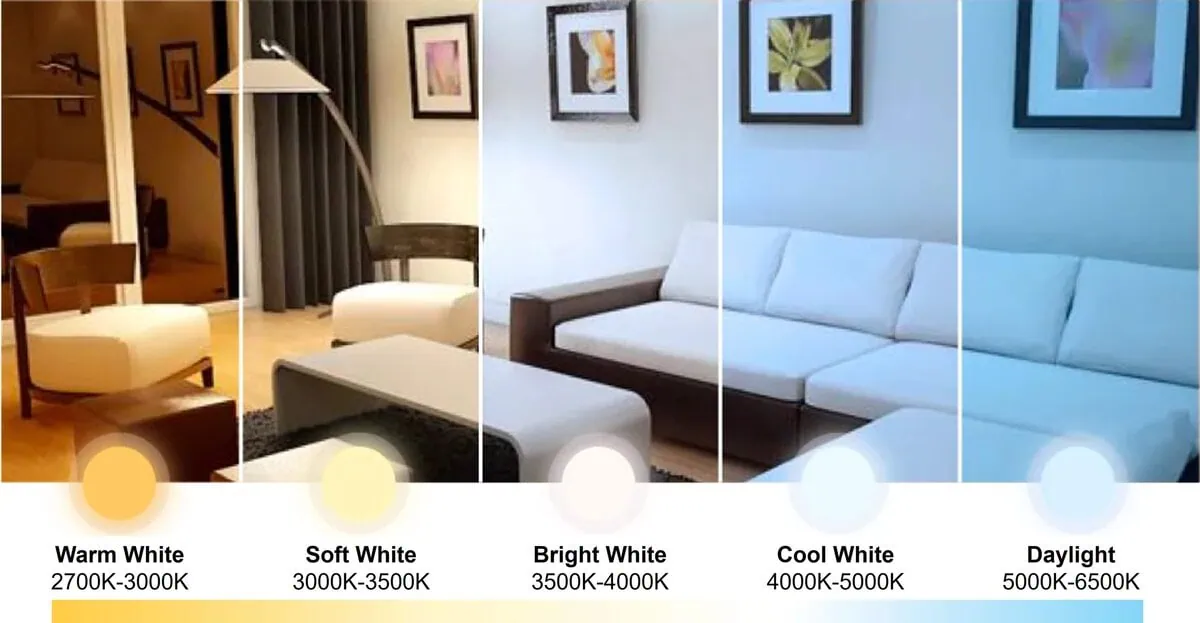
1. Bright White vs Daylight Bulbs
Both bright white and daylight bulbs are often chosen for their crisp, white appearance, but they serve different purposes. Bright White bulbs are ideal for tasks requiring clarity, such as in kitchens or offices. Daylight bulbs are made to look like natural sunlight. They are great for places where you need bright light, like workshops or garages.
For commercial applications, Daylight bulbs are often used in places like showrooms, hospitals, or large offices. If you want to learn more about how to choose the best daylight bulbs, visit our products page.
Core Difference: Color Temperature
- Daylight: Color temperature typically ranges from 5000K to 6500K. This color temperature simulates natural sunlight at midday.
- Bright White: Color temperature typically ranges from 3500K to 4100K. It’s somewhere between warm white and daylight.
Visual Differences:
- Daylight: Provides very accurate color reproduction, with a clear, cool, slightly bluish white. It creates an atmosphere of clarity, alertness, focus, modernity, cleanliness, and technology. The light is sharp, with relatively strong shadow contrast.
- Bright White: Provides excellent and natural color reproduction, with a pure, neutral, bright white. It creates a refreshing, bright, efficient, balanced, and neutral atmosphere. It is more “spiriting” than warm white light and more “friendly” and “natural” than daylight. Shadows are crisp but not glaring.
| Light Color | Visual Characteristics | Typical Applications |
|---|---|---|
| Daylight | Cool white light, sharp and clear, similar to midday sunlight | Residential: Kitchen counters, work desks, makeup areas Industrial: Workshops, laboratories, precision tasks, warehouses Commercial: Electronic displays, clinics, fresh produce areas Sports: Gym courts, locker rooms, high-visibility areas |
| Bright White | Neutral white, clean and crisp, naturally bright | Residential: Bathrooms, hallways, general lighting Industrial: Offices, meeting rooms, corridors Commercial: Retail shops, showrooms, restaurants, clinics Sports: Fitness zones, walking tracks, health clubs |
2. Soft White vs Warm White Bulbs
Soft White bulbs emit a warm, yellow-toned light, making them ideal for living rooms and bedrooms that desire a cozy atmosphere. Warm white bulbs provide a cozy warmth. They are great for creating a relaxed atmosphere in dining areas or lounges.
Core Difference: Color Temperature
- Soft White: 2700K – 3000K, emulating the warmth of traditional incandescent lamps/candlelight.
- Warm White: 3000K – 3500K, emulating the warmth of halogen lamps/sunrise and sunset.
Visual Differences:
- Soft White: A distinct orange/amber hue, creating a more “yellow” light. Richer and more laid-back, it creates a strong sense of rest and privacy.
- Warm White: A softer yellowish-white hue, slightly whiter than Soft White. Warm, comfortable, friendly, natural, and slightly energetic.
| Light Color | Visual Characteristics | Typical Applications |
|---|---|---|
| Soft White | A warm yellow tint, with a possible slight decreaseResidential: Main bedroom lighting, late-night living room ambient lighting, and candlelight dinner lighting in restaurants. Commercial: Western restaurants, bars, cafes, guest rooms, and corridors | |
| Warm White | Object colors appear more natural and warm, with slightly sharper details than Soft White and generally slightly better color rendering. | Residential: Living room main lighting, dining room main lighting, porch lighting Commercial: Restaurants, coffee shops, bakeries, lobby lounges, pantries |

3. Cool White vs Bright White
Cool White and Bright White are two types of neutral to cool white light that are easily confused. Here are their core differences, visual distinctions, and how to choose:
Core Difference: Color Temperature
- Cool White: 4000K – 5000K, representing efficiency, calmness, modernity, technology, and cleanliness.
- Bright White: 3500K – 4100K, representing brightness, freshness, efficiency, balance, and naturalness.
Visual Differences:
- Cool White: Cool white has a bluish cast, potentially giving objects a slightly cool tint. It creates a more rational and serious atmosphere.
- Bright White: A pure, neutral white with no distinct warm or cool tones, allowing objects to appear in their most naturally balanced state.
Key Considerations:
- Looking for calm, efficient, technologically advanced, and ultra-high definition? Choose Cool White (4000K-5000K).
For example: operating rooms, laboratories, and electronics factories. - Looking for a bright, professional, neutral, and natural look? Choose Bright White (3500K-4100K).
For example: offices, classrooms, retail stores, and most general commercial areas. - Simple Tip:
Cool White = coolness, technology, and seriousness
Bright White = neutrality, versatility, and naturalness

4. Difference Between Daylight and Soft White
Daylight and Soft White are the two extremes of color temperature, and their visual experience and applicable scenarios are very different.
- Soft White: With a color temperature of 2700K–3000K, this light is warm yellow. It creates a warm, relaxing, and lazy atmosphere with a slightly hazy feel. It’s suitable for rest and relaxation areas.
- Daylight: With a color temperature of 5000K–6500K, this light is cool white, similar to midday. It creates a refreshing, invigorating, and even slightly cool feeling. It’s suitable for high-concentration work areas.
| Type | Color Temperature (K) | Light Appearance | Typical Use |
|---|---|---|---|
| Daylight | 5000K – 6500K | Cool, crisp white with a bluish tone | Offices, workshops, reading, task lighting |
| Soft White | 2700K – 3000K | Warm, cozy light with yellowish tone | Living rooms, bedrooms, ambient lighting |
Key Factors for Selecting the Best Light Bulb
There are several factors to consider when choosing the best light bulb for your needs:
- Is Bright White or Daylight Brighter?
The main difference between Bright White and Daylight bulbs is brightness. Daylight bulbs typically have higher Kelvin ratings and emit a brighter light, perfect for detailed work. - The Difference Between Soft White and Warm White
Both types of bulbs create a warm atmosphere. Soft White bulbs are softer and great for intimate settings. Warm White bulbs provide a brighter light, making them perfect for larger commercial spaces.

Industry, Sports, and Commercial Applications
Lighting plays a vital role in different sectors:
- Industrial Applications
In industrial settings, lighting needs to be bright and reliable. Daylight bulbs are the preferred choice in warehouses, factories, and production lines. Bright White bulbs are commonly used in areas requiring precision and focus. - Sports Applications
For sports venues, lighting must ensure clear visibility without causing eye strain. Bright White and Daylight LEDs are typically used in stadiums, arenas, and courts due to their high luminous efficacy. - Commercial Applications
In commercial spaces like offices, retail stores, and showrooms, lighting creates the first impression. Daylight provides clarity, while Soft White and Warm White bulbs set a more welcoming atmosphere.
For more information on how to choose lighting for your commercial space, explore our products page.
Conclusion: Making the Right Choice for Your Lighting Needs
Choosing the correct lighting involves understanding the Kelvins and watts of the bulbs, as well as considering their application. Choosing the right light bulb is important for your space.
For a high-energy environment, consider Daylight or Bright White. For cozy settings, Soft White or Warm White works best. The right bulb can greatly improve comfort and functionality.
If you’re ready to make a change in your lighting, please feel free to contact us, our professional team will customize lighting solutions for you
People Also Ask
What color is soft white light in LED lighting?
The soft white light in LED lighting is a typical low-color warm yellow light with a distinct amber or yellowish hue, similar to the warm light of traditional incandescent lights, candlelight or sunset. It brings a warm, lazy and relaxing feeling.
Cool white and bright white seem quite similar — can I just pick either one?
While cool white and bright white are visually very similar, they create slightly different moods. Cool white often has a bluish tint, making it ideal for task lighting or workspaces. Bright white tends to have a slightly warmer or cooler tint. If you’re not looking for a specific mood or effect, you can choose either—the differences are usually subtle.
Is bright white the most commonly used LED light? In what scenarios is it most common?
Yes, bright white is one of the most commonly used LED color temperatures. Its bright, neutral, and natural qualities make it a popular choice for many homes, commercial, and industrial spaces.
For example, in kitchens, bathrooms, study rooms, streets, retail stores, warehouses, factory hallways, and more.
What is the difference between true white and daylight in LED lighting?
True White: 4000K – 4500K color temperature, pure neutral white, bright, professional, and natural without glare. Ideal for scenes requiring true color and comfortable lighting.
Daylight: 5000K – 6500K color temperature, cool white with a bluish tint. Ideal for professional areas requiring high precision and focus.

